
Posts from Bexar Audubon
South Central Texas:
birding and conservation articles, programs, webinars, classes, and other newsworthy items for BAS members.
February 19, 2025
Are You Up For
Building a Birdhouse?
It’s getting close to the point in late winter and early spring where our attention turns toward preparing for cavity nesting birds that will be looking for just the right woodpecker cavity, nest box, or birdhouse. Some of our most familiar backyard birds nest in cavities, including chickadees, wrens, bluebirds, purple martins, owls, and more. In fact, 88 species of cavity nesting birds across North America rely to some extent on dedicated birders who provide birdhouses to bolster the number of natural cavities that can be used.
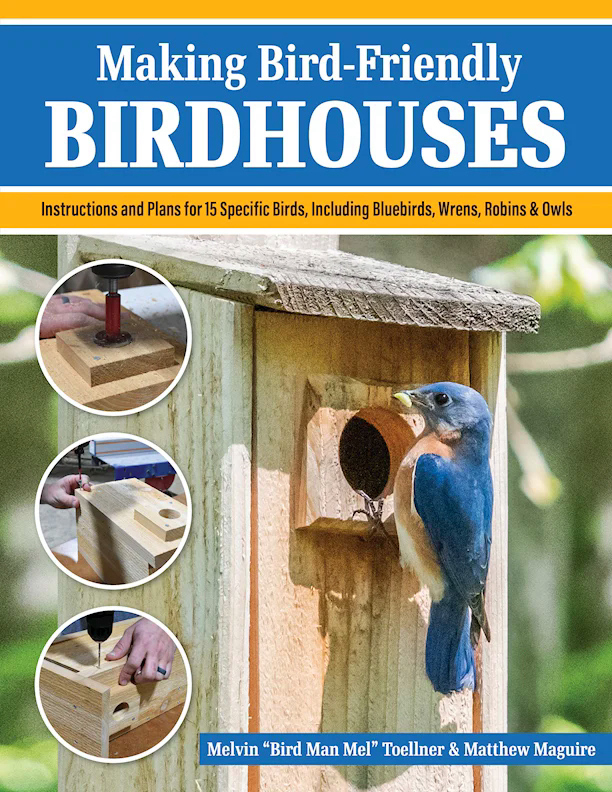
Read more HERE about whether to build your own birdhouses or to purchase them, a topic that will be explored in more detail later.
February 5, 2025
The Epic Migrations
of Blackpoll Warblers
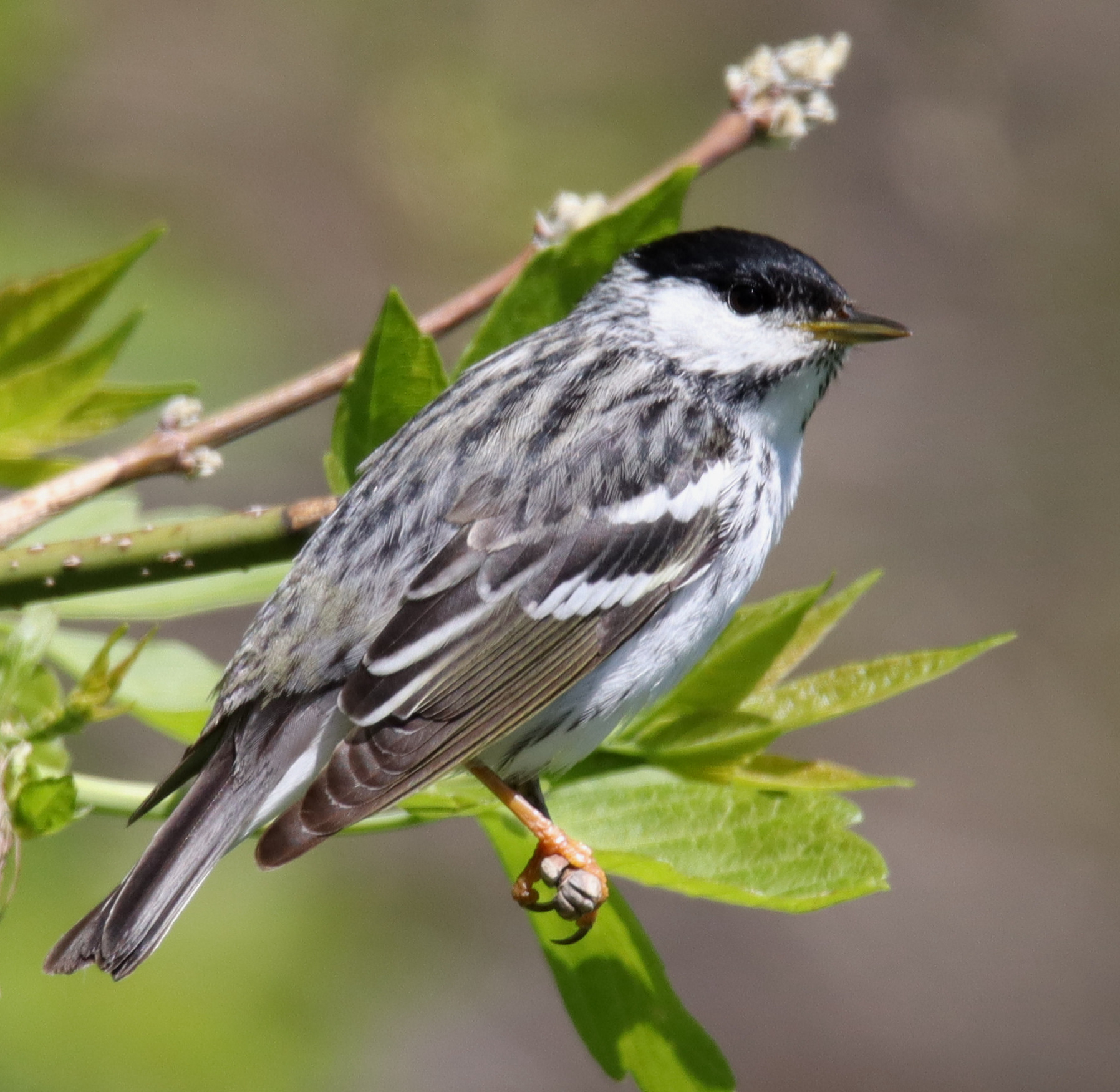
During the past decade, a dedicated group of researchers has been studying the migration complexities of Blackpoll Warblers, small but extraordinary songbirds renowned for their incredible migrations from their nesting range that spans the boreal forest of North America to tropical forests in South America – and back – flying thousands of miles each year.
Despite their remarkable abilities, Blackpoll Warblers are experiencing population declines from threats to habitats at key stopover and wintering sites, particularly in South America. The researchers’ long-term work underscores the urgency of conserving habitats along the Blackpoll Warbler’s migratory routes, including safeguarding stopover sites, restoring degraded habitats, and addressing continuing threats such as deforestation.
The Blackpoll Warbler’s long-distance migrations are a testament to a species’ resilience and complexity. With concerted efforts, we can ensure this species continues to thrive and inspire future generations across the Western Hemisphere. Read more HERE.
You can also refer to the original Birds Canada article at Unveiling the Blackpoll Warbler’s Epic Migration - Birds Canada | Oiseaux Canada
January 29, 2025
Identifying Owls
A New Online Guide

All 19 of the owl species native to the United States and Canada are featured in the new online Owl ID Guide, provided by the Owl Research Institute. And it’s much more than just an ID Guide, because each species’ range, size, behaviors, calls, and preferred habitats are listed – all of which help with species identification – along with their foods, nest sites, clutch sizes, incubation period, conservation status, and many helpful ID tips that experienced field biologists find out. Illustrated with ID-helpful photographs and range maps.
Access the complete Owl ID Guide on the Owl Research Institute’s website at Owl ID Guide I Owl Research Institute
January 17, 2025
Bird City Texas Certifies
Five New Cities
& Their First High-Flyer
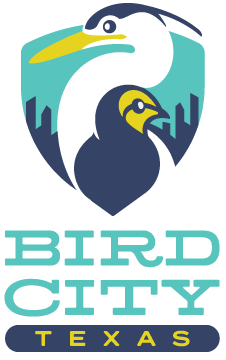
Audubon Texas and Texas Parks and Wildlife Department (TPWD) are excited to announce College Station, Denton, Kerrville, San Marcos and Wimberley have joined the Bird City Texas flock, while Galveston has become its first High-flyer.
This three-year certification program, a partnership between Audubon Texas and TPWD, recognizes cities’ efforts to ensure birds, wildlife and people thrive in their communities.
High-Flyer status is a distinguished designation that recognizes a community’s deep continued commitment to bird and habitat conservation efforts by achieving over 27 actions related to habitat, threats, and education. Galveston first achieved Bird City Texas status in January 2021, making 2025 their fifth year in the program.
Read more HERE.
January 1, 2025
HAPPY NEW YEAR!
Thought to Start the New Year:
"You cannot begin to preserve any species of animal unless you preserve the habitat in which it dwells. Disturb or destroy that habitat and you will exterminate the species as surely as if you had shot it. So conservation means that you have to preserve forest and grassland, river and lake, even the sea itself. This is not only vital for the preservation of animal life generally, but for the future existence of humanity -- a point that seems to escape many people."
Gerald Durrell, naturalist and author (7 Jan 1925-30 Jan 1995)
Thanks to member Ed Rogers
How Great Gray Owls
Hunt in Deep Snow
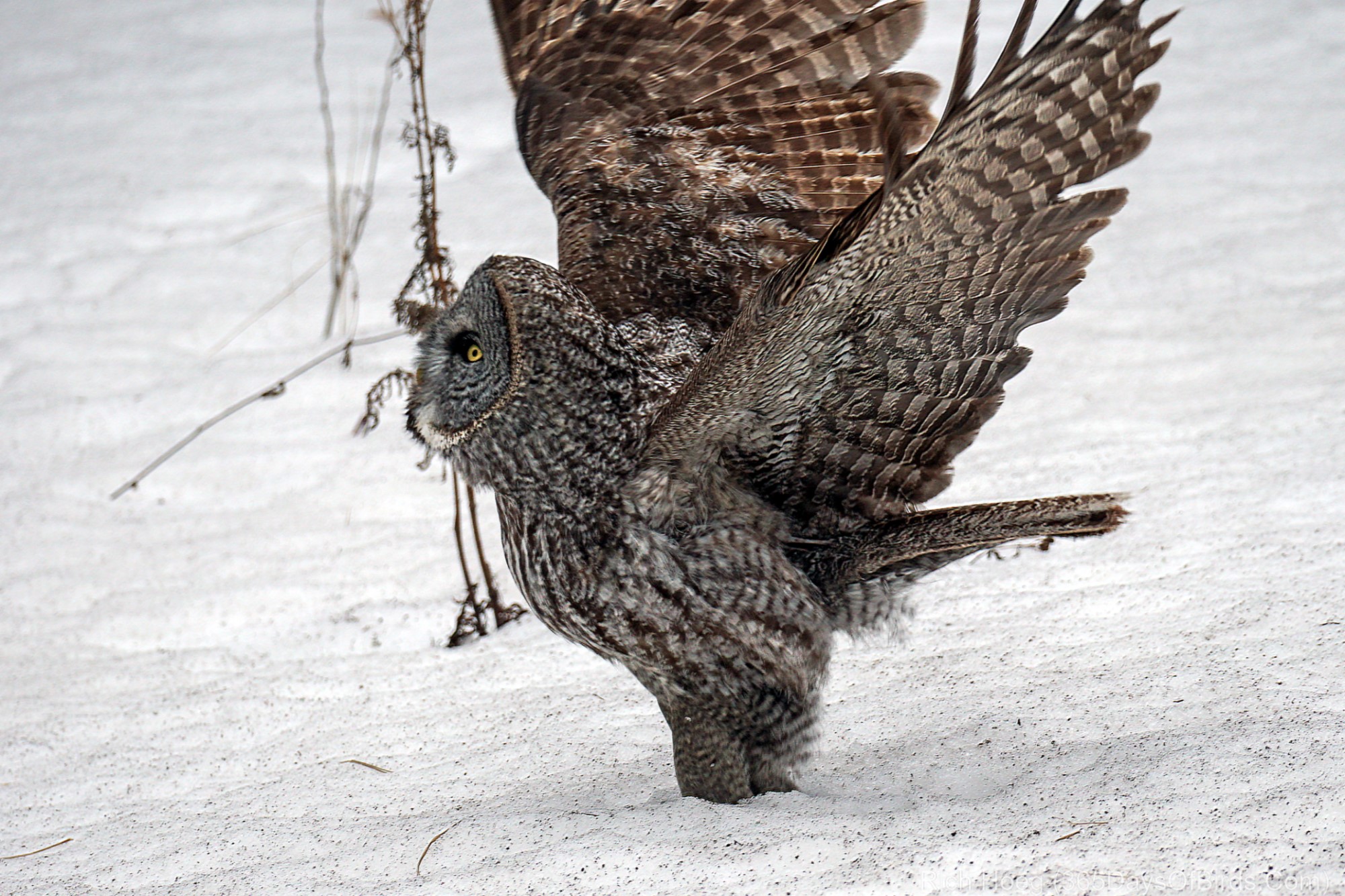
Great Gray Owls prowl the wintry north, punching through deep snow to catch hidden prey. In this article from Cornell Lab of Ornithology's Living Bird, you'll dive into a world of silent owls, stealthy voles, and "acoustic mirages" to find out how they do it.
Denver Holt, our featured speaker for the January meeting, will reveal more of the fantastic adaptions of owls. Sign up to attend in person on the Meetings and Events page.
December 24, 2024
Bald Eagle
Now Officially the
U.S. National Bird

The Bald Eagle is now officially the national bird of the U.S. after President Biden signed into law legislation amending a code to formally recognize the previously unofficial American emblem.
Read why it matters and more, HERE.
December 18, 2024
HAPPY HOLIDAYS!
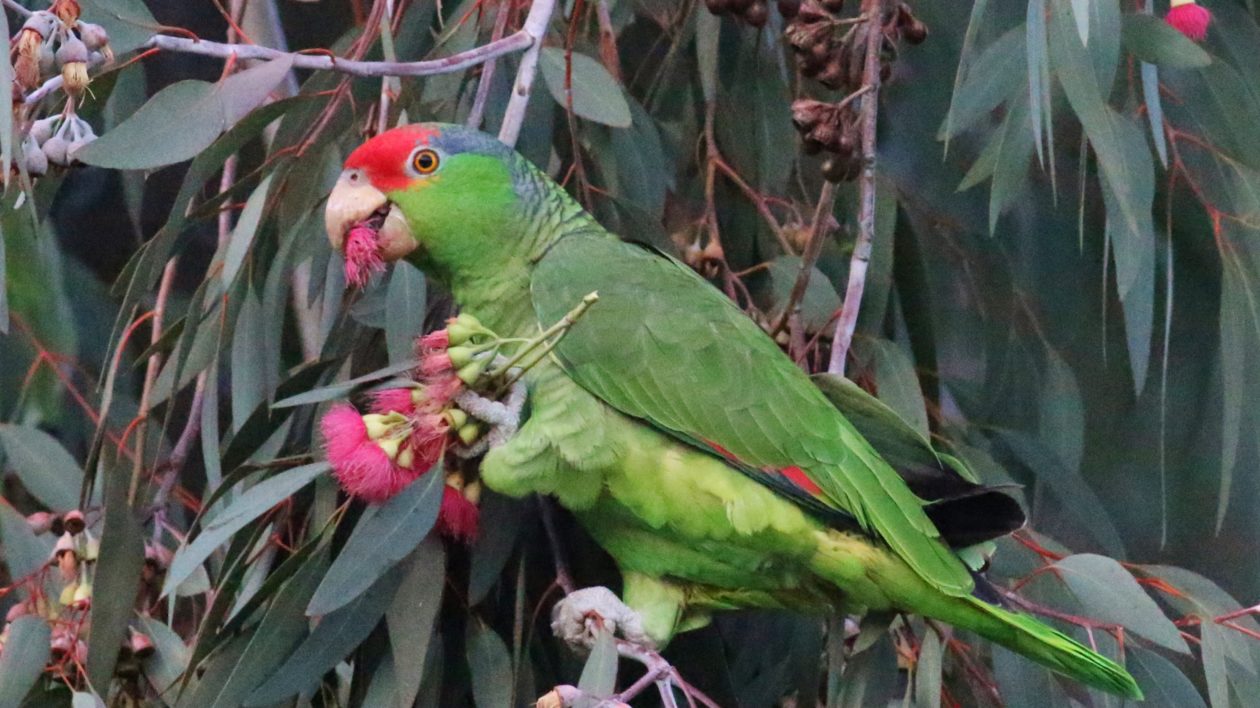
The last post for 2024 is a link to a great list of Backyard Birding Resources from The Birding Wire, which gathered information from a multitude of sources.
Read, Enjoy, Learn, Practice!
October 30, 2024
Female Bird Photos – Audubon’s Best

Many times, photographers overlook female birds as photo subjects, so to emphasize that female birds are stunning in their behaviors and activities, the Audubon Bird Photography Awards introduced the Female Birds category in 2021. By creating a space for photographers to intentionally focus on females, Audubon’s aim was to draw more attention to female birds as photo subjects. In a new collection of 10 Female Bird photos, the story behind the image is provided, along with a tip about how you can more easily identify a female of that species.
See the results for yourself HERE.
September 4, 2024
Hawk Migration Week:
September 14 to 22

Help celebrate International Hawk Migration Week by visiting a hawk count site near you from Saturday September 14th to Sunday the 22nd. This particular week in September is one of the best to see the highest daily counts of migrating raptors across North America. Last year, 113 sites across Canada, the United States, and Mexico tallied more than 700,000 migrating raptors during International Hawk Migration Week! This year more than 50 raptor migration monitoring sites will be celebrating with special raptor events, workshops, demonstrations, and festivals.
Throughout the fall migration period, now through November, you can monitor numbers of birds of prey migrating above raptor count sites across North America. In some cases you can see live updates of the number of eagles, falcons, hawks, and kites being seen, all provided at the HawkCount website, operated by the Hawk Migration Association of North America’s (HMANA). It’s also possible to see totals for each month, and to compare numbers with past years’ count totals. Even now, on peak days hundreds of raptors are being counted – even thousands!
Check out our closest Hawk Watch International site at Hazel Bazemore Park in Corpus Christi at this LINK.
August 21, 2024
Exemplary Avian Olympians

The Olympics showcased the world’s best athletes with their speed, agility, endurance, strength, and keen abilities. But even beyond the most impressive human records, some birds are capable of extraordinary physical records. For example, the annual 50,000 mile marathon that Arctic Terns endure while flying from the Arctic to the Antarctic and returning annually, or the 80 mile per hour sprinting flight of a Red-breasted Merganser. How about the longest non-stop flight, documented recently by a young Bar-tailed Godwit (photo) that flew 8,435 miles nonstop over 11 days, flying from Alaska to Tasmania in south Australia!
Learn more about avian Olympians in an interesting Audubon article online at These 5 Birds Are All Winners in the Migration Games | Audubon
Birds included in the article include Northern Pintails, Red Knots, American Golden Plovers, Sooty Shearwaters, Harlequin Ducks, Scripps’s Murrelets, Gray-cheeked Thrushes, Pacific Golden Plovers, Semipalmated Sandpipers, Whimbrels, Common Murres, and Blackpoll Warblers.
August 3, 2024
Two books to check out and
add to your birding library.

Tracking the natural beauty that surrounds us, The Backyard Bird Chronicles maps the passage of time through daily entries, thoughtful questions, and beautiful original sketches. With boundless charm and wit, author Amy Tan charts her foray into birding and the natural wonders of the world.
In 2016, Amy Tan grew overwhelmed by the state of the world: Hatred and misinformation became a daily presence on social media, and the country felt more divisive than ever. In search of peace, Tan turned toward the natural world just beyond her window and, specifically, the birds visiting her yard. But what began as an attempt to find solace turned into something far greater—an opportunity to savor quiet moments during a volatile time, connect to nature in a meaningful way, and imagine the intricate lives of the birds she admired.
Buy the original flexibound version
to get the look and feel of a
personal nature journal.

Renowned naturalist Kenn Kaufmanexamines the scientific discoveries of John James Audubon and his artistic and ornithologist peers to show how what they saw (and what they missed) reflects how we perceive and understand the natural world.
Raging ambition. Towering egos. Competition under a veneer of courtesy. Heroic effort combined with plagiarism, theft, exaggeration, and fraud. This was the state of bird study in eastern North America during the early 1800s, as a handful of intrepid men raced to find the last few birds that were still unknown to science.
The most famous name in the bird world was John James Audubon, who painted spectacular portraits of birds. But although his images were beautiful, creating great art was not his main goal. Instead, he aimed to illustrate (and write about) as many different species as possible, obsessed with trying to outdo his rival, Alexander Wilson. George Ord, a fan and protégé of Wilson, held a bitter grudge against Audubon for years, claiming he had faked much of his information and his scientific claims. A few of Audubon’s birds were pure fiction, and some of his writing was invented or plagiarized. Other naturalists of the era, including Charles Bonaparte (nephew of Napoleon), John Townsend, and Thomas Nuttall, also became entangled in the scientific derby, as they stumbled toward an understanding of the natural world—an endeavor that continues to this day.
Despite this intense competition, a few species—including some surprisingly common songbirds, hawks, sandpipers, and more—managed to evade discovery for years. Here, renowned bird expert and artist Kenn Kaufman explores this period in history from a new angle, by considering the birds these people discovered and, especially, the ones they missed. Kaufman has created portraits of the birds that Audubon never saw, attempting to paint them in that artist’s own stunning style, as a way of examining the history of natural sciences and nature art. He shows how our understanding of birds continues to gain clarity, even as some mysteries persist from Audubon’s time until ours.
Available in Hardback and Kindle.
August 2, 2024

Help Birds Beat the Heat
Many people love a cool dip on a hot August day, and birds love it, too.
A simple birdbath makes a big difference, especially with recent scorching temperatures. Provide fresh water for cooling off, bathing, and drinking with a birdbath! Putting a birdbath in your yard may attract birds that don’t eat seeds and wouldn’t otherwise come to your feeders.
Be sure your birdbath gets the "Birds Prefer" Seal of Approval.
Shallow is Better! Birds don't like to get completely submerged in a bird bath (that would make it too difficult to escape a predator). If you have a deep bird bath, put a flat rock in it to life the birds above the water.
Place the bird bath near cover so that birds can quickly fly away and hide to continue their preening safe from harm. Would YOU like to bathe in the middle of a bare yard?
When you get a bird bath, be sure to keep filled and clean it regularly to help prevent the spread of disease. And the sound from dripping water really brings in the hot, thirsty feathered crowds. A plastic bottle with a pin hole in the bottom will do the trick, or invest in a dripper that attaches to your water supply.
For more information on providing water for birds, please see and download the free PDF brochure about providing water for birds from Cornell Lab of Ornithology.
SPLISH SPLASH!

